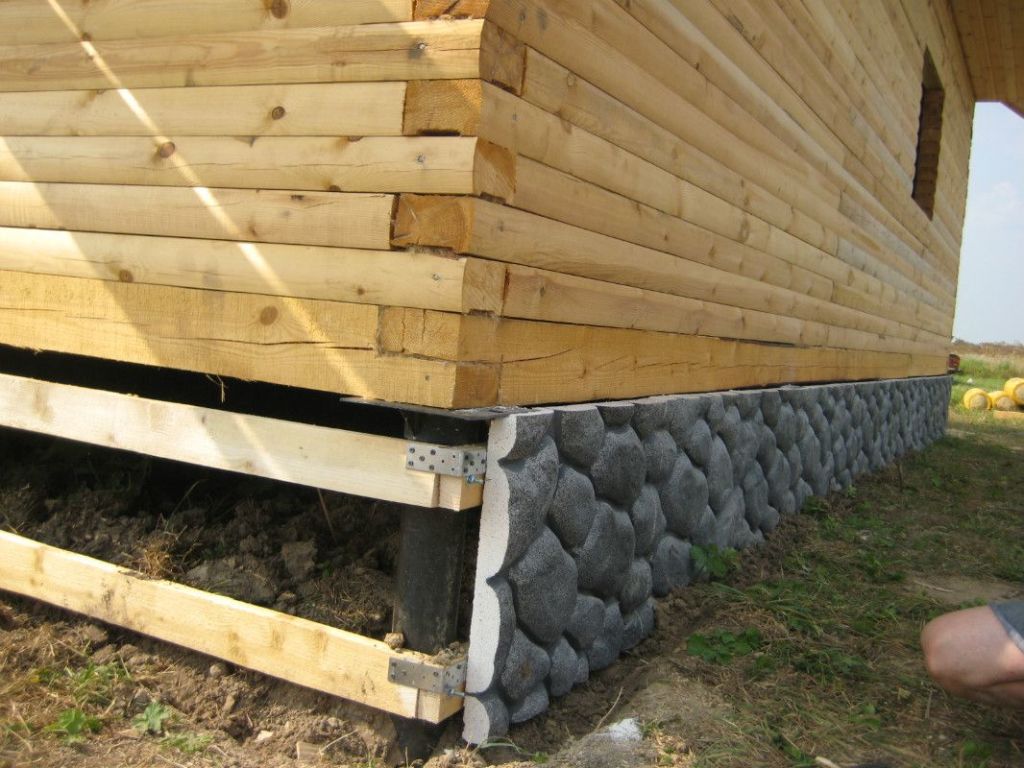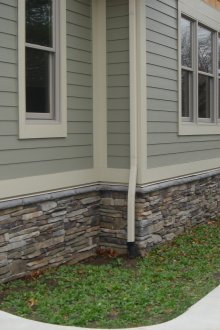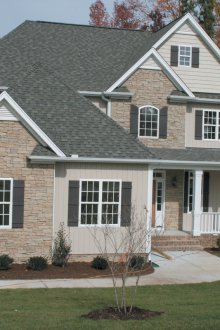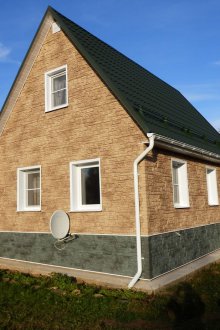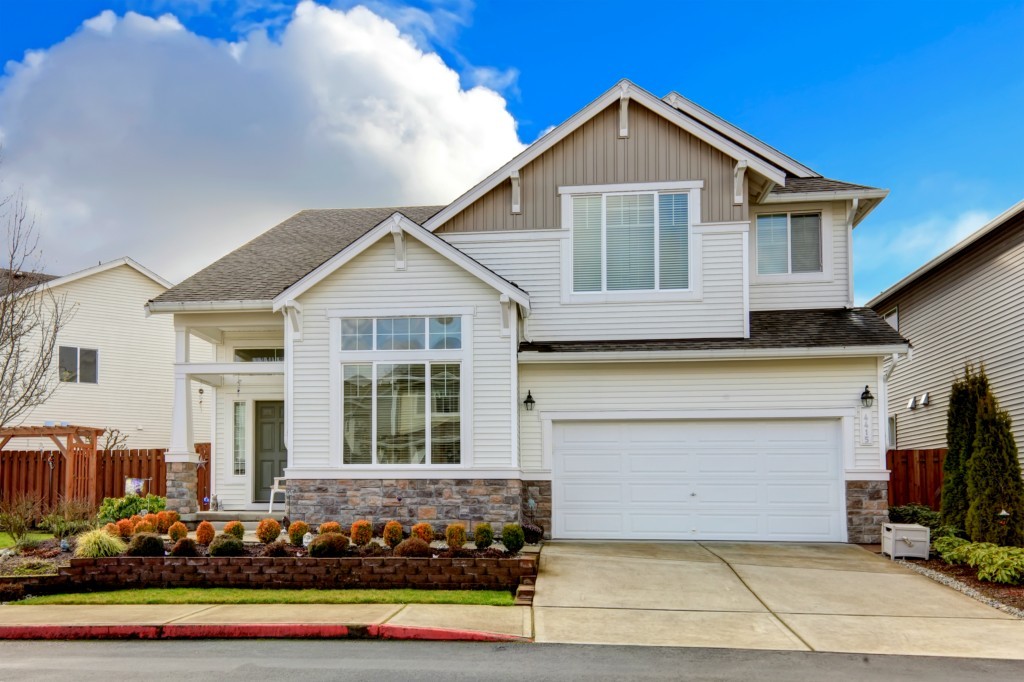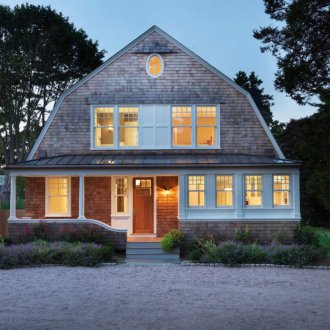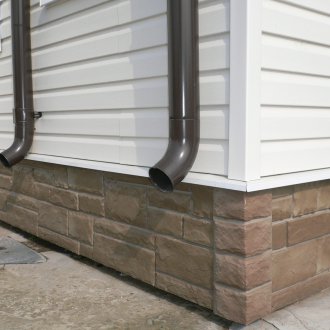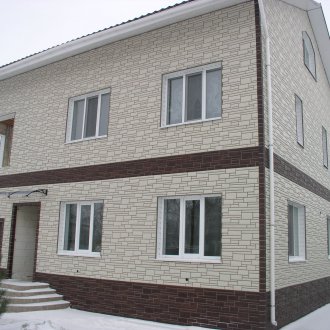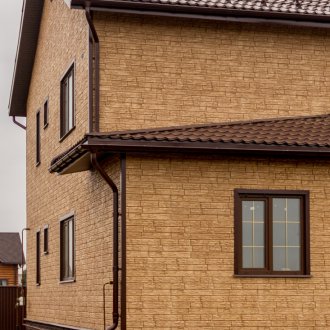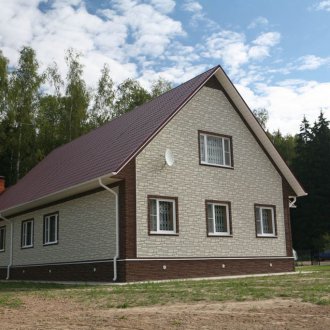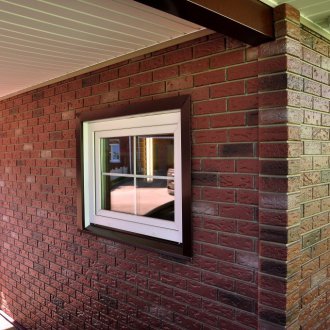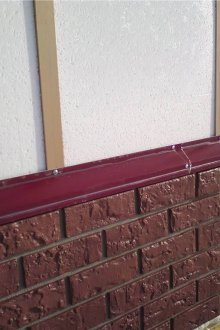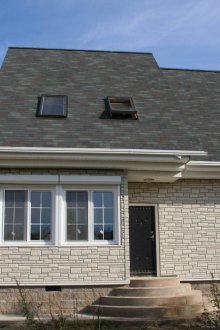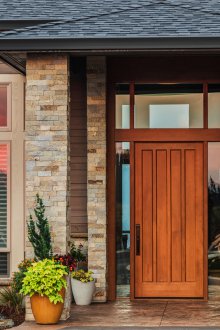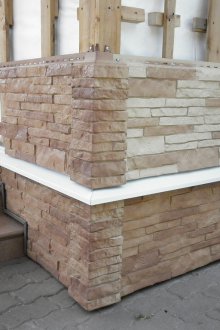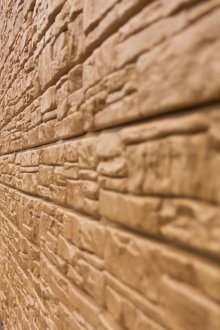Basement siding: interesting design options (21 photos)
Content
This type of decoration material immediately conquered the market - natural stone and brick are quite desirable for people living in private houses.
At the same time, not only the basement of the building began to be faced, but the whole house - beautifully, effectively and quickly. In addition, basement siding under a stone or brick is relatively inexpensive - taking into account the durability of such cladding, this is a profitable investment.
The cost of the basement finish depends on the material and the method of lining, so if you wish, you can choose the update option that is suitable for the price - just look at the photo to understand that basement siding is worth the money.
What kind of material is this?
Siding in general is a facade cladding, a variant with modified parameters is called a “basement”. Initially, it was supposed to be mounted only on the protruding part of the foundation, so these are small rectangular panels.
The main types of basement
A few types of basement siding:
- stone surface (rubble stone, palace stone, granite, etc.);
- brick;
- wood chips.
All the variety of panels offered for sale can be attributed to one of these three points.
Consumers very quickly appreciated how beautiful and fundamentally a house looks, completely lined with such panels. There are options for combined cladding with a game of shades and textures - plating with basement siding can become one of the points of the design project for the overhaul of the house and adjacent buildings.
The varieties of any of the three main types are almost endless, for example, rough uncultivated wild stone, rubble stone - in all variations of sand, brown or other colors. There are options with a white stone.
“Stone” cladding - finishing with basement siding literally gives a second life to any old building. Torn or hewn stone can be used inside the house - for those who want to live in a medieval setting. This option is also suitable for ecostyle lovers - natural and unobtrusive shades of brown, white, a cobblestone corridor - beautiful, long-lasting and relatively inexpensive. For dark rooms, you can choose light shades of rubble stone or brick - there are many options besides white.
Basement siding "brick" turns an old wooden house into a brick cottage. There is also no limit to fantasy - bricks of any size, type and shades. Combined cladding can be made of different colors, plus basement siding “brick” will delight lovers of the loft style in the interior - now light and plausibly launched brick walls can be installed in the premises of the house in one day. In this case, the brick does not have to be red - it can be sand or white. For the loft style, the option with a rubble or torn stone is also suitable.
What is it made of?
The main materials used for the production of siding are few, only a few types:
- polyvinyl chloride - in an alloy with polypropylene and other substances and stabilizers;
- metal panels, aluminum and galvanized steel are used, coated with polymer color coatings or coated with especially durable paints;
- cement with the addition of synthetic fiber, coated on top with a thin layer of ceramic, such panels do not need to be washed, they have a natural color.
Some manufacturers make products from one material, others produce a little of everything - in any case, there is a choice.
Polyvinyl chloride or plastic
Vinyl basement siding is the most inexpensive option listed. At the same time, it has excellent characteristics and lasts a very long time without losing sight. The panels are painted during manufacture, that is, dyes are added to the molten mass, so a fresh and saturated color is maintained throughout the entire service life.
Metal siding
Metal base siding is stronger than plastic; it will serve for more than 25 years. It is coated with a polymer coating of a special composition, which is also amazingly durable. It does not require any special care, except for annual washing.
Cement
Ceramic basement siding is not the most popular material, but it has a natural look and quite decent characteristics. The drawing, that is, the texture or color, is applied by photo printing.
Definitely, such panels externally differ from plastic of any category. Mostly Japan specializes in this eco-friendly option. They cannot be called cheap, but their service life is not measured - they are put once and for all.
How to navigate the market?
A variety of variations from these starting materials are widely marketed. They are brought by foreign manufacturers, and also produced in our country.
From abroad
Having decided to decorate your house with socle panels, you can easily pick up for any requests, there are offers both expensive (USA, Japan, Germany), and quite budget ones, for example, Chinese.
Expensive panel options are made using natural wood of noble species - this is the texture of "wood chips". Imitation of stone is made not only from vinyl, but also fiber cement.
It should be noted that the more expensive the product, the more natural it looks. In addition, expensive options are equipped with locks connecting the panels without seams. After assembly, the joints cannot be found.
Together with the panels, the corresponding fasteners and accessories are sold in the kit, which reduces the time of collecting material for the magical transformation of your home.
What do ours produce?
Domestic manufacturers of basement siding have not yet gained full strength. Most often these are joint ventures, or companies having one or two production lines abroad.
Russian products are manufactured using Western technologies, sold in the middle price category, approximately like Canadian options. You can give an example: the panels of “Fainbir”, two-layer. There are other varieties, at a price almost the same. The quality of products of domestic companies is not inferior to foreign counterparts.
When purchasing any basement panels, you should first carefully calculate, based on the surface area that will be faced and the dimensions of the selected panels. If you contact the company engaged in the sale and installation of facade decoration, you can call the wizard to measure. You can also use the calculator - it is on sites that sell siding.
But in any case, the calculation should be made after a certain type of panels is selected and inquiries about its exact dimensions are made.
You need to buy with a margin of at least 10%. The smaller the area of the working surfaces, the more waste will be - to fit. It is recommended to insulate the outer wall - then insulation plates with accessories should also be included in the calculations.
Basement installation
Finishing the facade with this version of the material will enable the owner of the house to claim that he has been doing work for centuries (or at least for decades).
The work can be done in different ways, but there are certain steps that should not be skipped:
- measurements (this is necessary to purchase the right amount of facing material);
- selection of tools;
- preparation of the surface of the walls to be revetted.
You should choose panels by repeatedly imagining your home after repair. For better visibility and the formation of their own ideas, you can see photos of finished facade claddings, which are presented in an incredible amount on the network. A few articles on how to install a siding with insulation will also help clarify the problem.
If you approach the problem thoughtfully, you can create incredible compositions on the walls, since the number of variations in colors and textures allows you to:
- a combination of panels with rubble stone from white to dark brown - color transitions and individual islands of shades of brown;
- patterns laid out from panels under a brick in shades of red, white, brown;
- in a room where it is dark, you can make a snow-white wall - under a brick or torn stone;
- other options that may arise if you spend a little time studying the samples.
It is better to mount on a crate - wooden or metal (along the way, the wall is strengthened). Wooden slats are pre-treated with protective substances.
The installation step of the battens is determined by the height (with a vertical battens - the width) of the panels to be mounted.
The starting bar is installed at the beginning of the work, you need to check the correctness of its location with the building level. Only then can the panels themselves be mounted.
If you turn to professionals, then all the work will be completed in one day, however, an independent solution to this problem will save a significant amount.
The stylish look of a warm house - such a result will be after the end of work, it is achievable and affordable.


